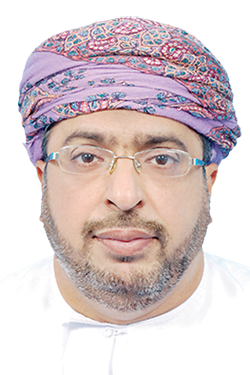

Since the declaration of World Arabic Language Day by the United Nations on December 18, 2012, Arab nationals did not appreciate its significance up until 2019, when some parts of the world held events highlighting the importance of this language. This year, a number of universities and educational and noneducational institutions across the Arab world, including Sultan Qaboos University, along with other relevant international institutions, celebrated the milestone.
Arabic is the sixth official language adopted by the United Nations since 1973, along with the decision to declare December 18 of each year as Arabic Language Day, providing an opportunity for organising more events in the future to shed light on this language and its status, reality and future among the Semitic languages. This year’s theme was “Arabic language and Artificial Intelligence.”
Dr Mahmoud bin Suleiman al Riyami, Professor at the Department of Arabic Language and Literature, Sultan Qaboos University, believes that there are various structural and cultural characteristics in the Arabic language and its presence in both real and virtual worlds. At a recent forum, he noted that 422 million people are Arabic speakers, and although several languages have become extinct, Arabic is not one of them.
Characterised by phonetics, sentence structure, brevity and interconnectedness, the Arabic language has a middle root, 28 letters, in addition to 3 vowels known as Fat-ha, Damma and Kasra. There is also distinction between names, verbs, letters and genders, unlike other languages, he said.
Dr Mahmoud also noted that “the linguistic lexicon capacity (used and idle) of the Arabic Language is 12 million words, out of which only 400,000 are used, with the average person using between 8,000 to 12,000 words. From a civilizational perspective, Arabic is the language of the Holy Qur’an used by 1.5 billion Muslims, influencing most international languages, such as English, French and others. It is also the oldest human language used to date (2,000 years), with great clarity.
The Arabic language emerged from Arabia with the spread of Islam, and it has prevailed in the world for several centuries. However, the reasons for its decline are the ignorance of children, maliciousness of enemies and scientific, political and civilizational backwardness of the Arabs, which had a negative impact on the Arabic language. Nations cannot rise without having their own languages, and there is a struggle in bilingualism, hybrid languages, lack of Arabic use in higher education, scientific research, global economy and globalisation. There are weaknesses in Arab linguistic academies and weakness in translation, publishing and creativity. Arabs are still backward in the field of translation.
Dr Mahmoud believes that 71 per cent of the Arab population have access to the worldwide web, and that there are 18 million passive technology consumers (ranking 14th globally). “In addition, major tech companies are showing interest in Arabic from a consumer perspective, leading to the success of projects on Arabic language computerization, artificial intelligence and the Internet of things,” he added, stressing that the Arabic language must be present in these systems to continue, and Arab search engines must be created on par with foreign ones, just like China and Iran have done.
Regarding the future outlook for the Arabic language, Dr Mahmoud explained that subjective, civilizational and religious strength is a survival factor for it, and that the future is not bleak because Arabic has its own strength, as well as a civilizational and religious depth that cannot be easy to overcome. “There is an increase in the number of institutes, colleges and studies in the Islamic world for the Arabic language, coupled with an increase in its users from non-Muslim scholars outside Arab countries, along with its presence in the tech world and the media. However, there is a need to enhance translation, increase digital content for Arabic and take proactive measures to be part of the fourth technical revolution and beyond. Moreover, Arabic language reform is required today, accompanied by parallel Arab educational, political, civil and legislative reform,” he added.
“The Arabic language will prevail, even if after a while, because education needs Arabic, and so do educational and scientific research centres, to promote aspects of the Arabic language. It is important for any nation to preserve and upgrade its own language, which requires the Arabs not to surrender if they wish to advance this language and everything that concerns us in this world,” he concluded.
haiderdawood@hotmail.com
Oman Observer is now on the WhatsApp channel. Click here



